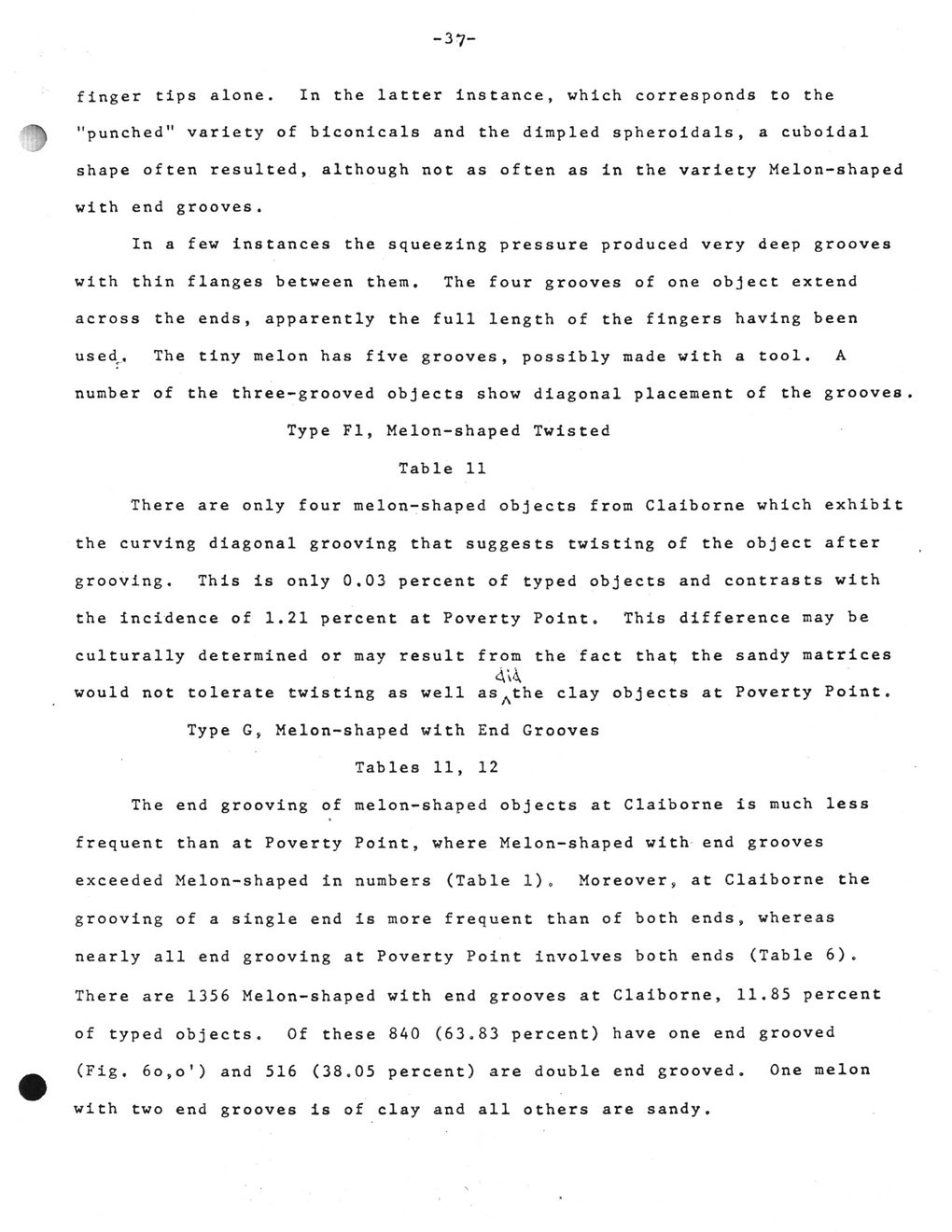This text was obtained via automated optical character recognition.
It has not been edited and may therefore contain several errors.
finger tips alone. In the latter instance, which corresponds to the "punched" variety of biconicals and the dimpled spheroidals, a cuboidal shape often resulted, although not as often as in the variety Melon-shaped with end grooves. In a few instances the squeezing pressure produced very deep grooves with thin flanges between them. The four grooves of one object extend across the ends, apparently the full length of the fingers having been used., The tiny melon has five grooves, possibly made with a tool. A number of the three-grooved objects show diagonal placement of the grooves. Type FI, Melon-shaped Twisted Table 11 There are only four melon-shaped objects from Claiborne which exhibit the curving diagonal grooving that suggests twisting of the object after grooving. This is only 0.03 percent of typed objects and contrasts with the incidence of 1.21 percent at Poverty Point. This difference may be culturally determined or may result from the fact that; the sandy matrices would not tolerate twisting as well as^the clay objects at Poverty Point. Type G, Melon-shaped with End Grooves Tables 11, 12 The end grooving of melon-shaped objects at Claiborne is much less frequent than at Poverty Point, where Melon-shaped with end grooves exceeded Melon-shaped in numbers (Table 1)? Moreover, at Claiborne the grooving of a single end is more frequent than of both ends, whereas nearly all end grooving at Poverty Point involves both ends (Table 6). There are 1356 Melon-shaped with end grooves at Claiborne, 11.85 percent of typed objects. Of these 840 (63.83 percent) have one end grooved (Fig. 6o,o') and 516 (38.05 percent) are double end grooved. One melon with two end grooves is of clay and all others are sandy.

Walden 048